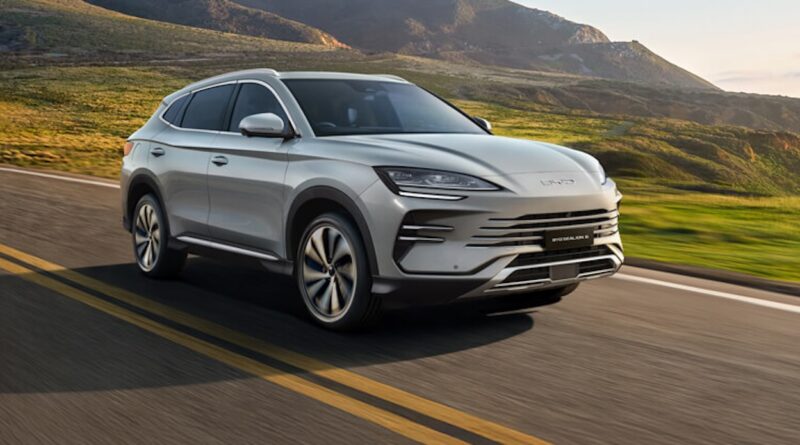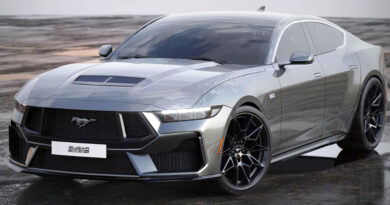PHEV range war! BYD Sealion 6 responds to Chery, Geely, Haval, Jaecoo, MG and Mitsubishi with bigger battery and longer range
PHEV SUV sales behemoth BYD is fighting back against an emerging slew of Chinese rivals with a longer range version of the Sealion 6.
Priced at $46,990 plus on-road costs and on-sale now, the Sealion 6 Dynamic Extended Range, is $1000 more than the Sealion 6 Dynamic Standard Range ($45,990) and $4000 more than the Sealion 6 Essential ($42,990).
The Sealion 6 Premium Standard Range continues as the $52,990 flagship of the range.
READ MORE: “We want to take it to the next level”: BYD boss previews major marketing and localisation push as Chinese brand aims to embed itself in Australia
READ MORE: “It’s going to be tough”: New BYD boss predicts some established auto brands will struggle to survive the Chinese onslaught in Australia
READ MORE: New BYD Australia boss promises more models and better customer service: “We want to be an established leader in every respect,” declares Stephen Collins
Earlier this year during a model price cut and rejig the BYD plan was reportedly to phase the Dynamic model line out, but that decision has clearly now been changed.
The Extended Range swaps from an 18.3kWh battery pack to a 26.6kWh BYD blade battery pack, extending the EV-only range from 80-90km to 120-140km.
The only other changes compared to a Dynamic Standard Range are the addition of a head up display and the swap to black trim .
Total Extended Range combined range is claimed to be 1092km on the stricter WLTP measure. Previously, the best Sealion 6 claim was the same number on the looser NEDC measure.
Other mechanical aspects of the Sealion 6 such as its DM-i plug-in hybrid powertrain remain unchanged.
The Dynamic Extended Range employs the lower-powered and more frugal 1.5-litre front-wheel drive set-up.
The official fuel consumption claim continues to be a highly theoretical 1.1L/100km.
The extended EV-only range puts the Sealion 6 back at the top of the pile compared to the claims of a slew of new ‘Super Hybrid’ – as several of them are dubbed – PHEV rivals from Chery and its Jaecoo affiliate, Geely, GWM Haval and MG.
The original SUV PHEV, the Mitsubishi Outlander, is also coming up for an update.
The relevant vehicles and claims are listed here. Some of these claims are to WLTP and some to the less stringent NEDC, which aligns with Australian Design Rukes.
WLTP is tougher and more accurate.
Chery Tiggo 7 Super Hybrid
Battery size: 18.3kWh
EV range: 93km (NEDC)
Combined range: 1200km (NEDC)
Price: From $39,990 drive-away
Geely Starray EM-i Super Hybrid (launching September)
Battery size: 18.4kWh
EV range: 83km (WLTP)
Combined range: 943km (WLTP)
Price: TBA
GWM Haval H6 PHEV
Battery size: 19.09kWh
EV range: 106km 2WD/100km AWD (NEDC)
Combined range: 1106km 2WD/1043km AWD (NEDC)
Price: From $50,990 drive-away
Jaecoo J7 PHEV
Battery size: 18.3kWh
EV range: 90km (WLTP)
Combined range: 1200km (WLTP)
Price: $47,990 drive-away
MG HS Super Hybrid
Battery size: 24.7kWh
EV range: 120km (WLTP)
Combined range: 1000km+ (MG estimate)
Price: From $52,990 drive-away
Mitsubishi Outlander PHEV (2025 facelift)
Battery size: 22.7kWh
EV range: 86km (WLTP)
Combined range: TBA
Price: From $57,290 (pre-facelift – update pricing TBA)
“With this new variant, we’re giving customers more flexibility and more value,” said Stephen Collins, Chief Operating Officer, BYD Automotive Australia in a press release.
“The Sealion 6 Dynamic Extended Range blends innovation, performance, and affordability in a way that truly redefines what Australians can expect from a plug-in hybrid SUV.”
So far in 2025 (end of July), BYD has sold 5498 Sealion 6s, helping drive a 146 per cent sales lift for the brand year on year.




